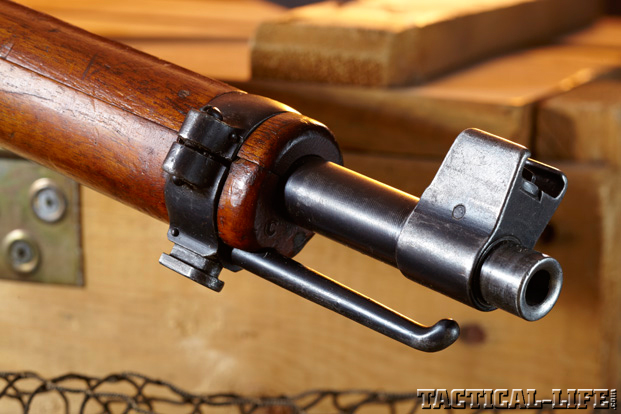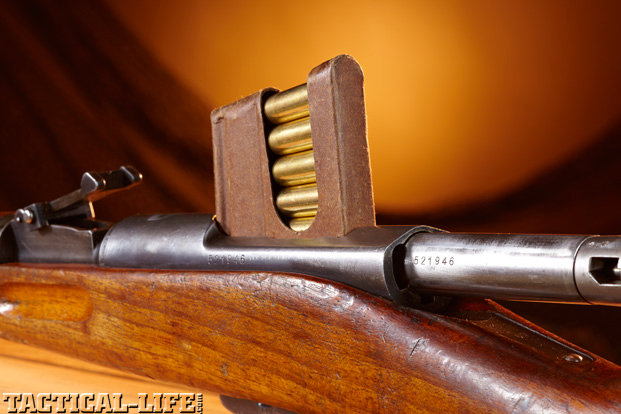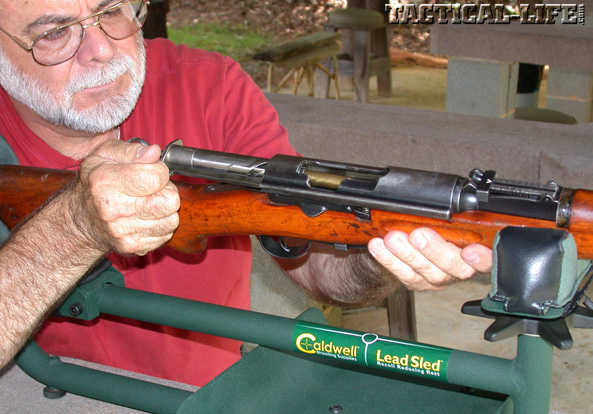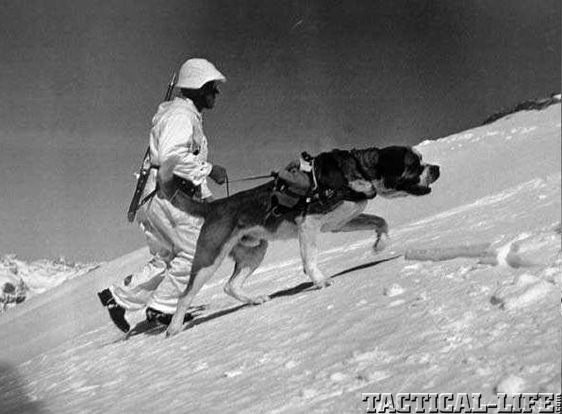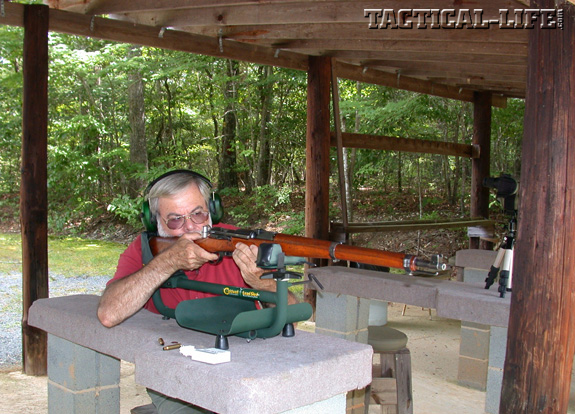When I was in high school, we had a neighbor who had emigrated from Switzerland after World War II. He told us a story once about when Germany’s Kaiser Wilhelm II made a state visit to Switzerland before World War I. While reviewing an honor guard of Swiss soldiers, the Kaiser stopped to compliment their non-com on the men’s soldierly appearance. Half-jokingly, the Kaiser asked what would little Switzerland do if the Imperial German army invaded them with a force twice as strong. The grey-haired Feldwebel thought for a moment before answering: “Then, Your Excellency, we will all have to fire our rifles twice!”
The Swiss realized early on that their neutrality could only be maintained by making their potential aggressors realize that Switzerland would offer massive resistance to any invader. This was accomplished by maintaining the best-trained and -equipped “people’s army” in Europe. Practically all males between the ages of 18 and 65 are in the standing army or reserves, and reservists store their uniforms, equipment, weapons and ammunition at home so they can mobilize quickly.
Bolt Action
Switzerland was the first nation to equip their army with a repeating rifle, the Repetier-Gewehr 1869, or Vetterli, a bolt-action rifle with a 12-shot tubular magazine. While it fired a ballistically unimpressive 10.4mm rimfire cartridge, it gave the Swiss soldier an unprecedented rate of firepower. And Swiss soldiers were, and are, trained marksman. Marksmanship was constantly stressed, and to this day the government subsidizes target shooting among reservists and civilians, to encourage proficiency with the rifle. In 1883 Major Eduard Rubin of the state Munitionsfabrik at Thurn submitted to the Swiss Army 7.5mm and 8mm cartridges that used copper-jacketed bullets propelled by compressed black powder. The next year, Schweizerische Industrie-Gesellschaft (SIG) converted numbers of Vetterli rifles for the new cartridge, but trials showed they were not strong enough for the high-pressure round. In 1885, Colonel Rudolph Schmidt of the Bern Arsenal submitted a design that would serve as the basis for Swiss service rifles for the next seven decades.
Advertisement — Continue Reading Below
Schmidt’s rifle utilized a bolt handle that was attached to an actuating rod in a channel on the right of the receiver, with a lug that engaged a helical groove in the bolt sleeve. When pulled to the rear, it rotated the sleeve, unlocking dual bolt lugs from recesses in the receiver. The rod then drew the bolt back to extract and eject the empty case. Pushing the bolt forward, it picked up and chambered the next round from the magazine as it went into battery. Schmidt’s straight-pull design lacked strong initial extraction of the cartridge case and required a long, tubular receiver: it provided a high rate of aimed fire with the least amount of physical effort.
In 1885 the Swiss Army tested Schmidt’s rifle against a design submitted by SIG. The introduction of smokeless powder by the French army in 1886 caused a delay as Major Rubin’s design team began work on a new propellant. On June 26, 1889, Schmidt’s rifle was adopted as the Infanterie Repetier Gewehr 1889, which used a modification of Rubin’s 7.5mm cartridge. In 1891, production began in Bern at Eidgenossische Waffenfabrik, who would remain the sole manufacturer of Schmidt-Rubin rifles until 1958.
Transition
The Infanterie Repetier-Gewehr 1889’s tubular receiver was 8.5 inches long, about 3 inches longer then a contemporary Mauser receiver, with a bolt handle that stuck out at 90 degrees. A ring shaped safety/cocking piece at the rear of the bolt was drawn back and rotated clockwise to set the rifle on “safe,” and its 12-round, removable box magazine was loaded through the top of the open receiver, with 6-round chargers made from cardboard and tin. A bolt release was positioned beneath the bolt handle. The new cartridge, the 7.5mm Gewehr-Patrone M.90, used a rimless case that was 53.5mm long. Its round-nosed, steel-capped, 210-grain, paper-patched lead bullet fired at 1,970 fps by a charge of semi-smokeless powder. The barrel was completely free-floating, and the section under the muzzle band was encircled with an aluminum collar. This permitted the barrel to vibrate exactly the same for each shot, or when dampness caused the wooden stock to swell.
In 1895, the Swiss attempted to improve the performance of the M.90 cartridge, but it became apparent that the 1889’s action was not strong enough. To correct this, the locking lugs were relocated to the front of the bolt sleeve, which provided improved locking and made the bolt and receiver slightly shorter. Manufacture of the improved Repetier-Gewehr 1889/96 began in 1897 and continued until 1912. In 1903, the Swiss developed a suitable smokeless powder for the 7.5mm Gewehrpatrone M.90/03 cartridge, which pushed a round-nosed, 190-grain FMJ bullet to a velocity of 2,050 fps. Eight years later the 7.5mm Gewehrpatrone 11 was adopted and would remain in frontline service until the early 1990s. Its 174-grain, boat-tail spitzer bullet had a 2,640-fps muzzle velocity. To prevent this load from being fired in older rifles, the cartridge case was lengthened to 55mm. These cases were consequently preserved for reloading, as all-Swiss military-rifle ammunition has been loaded with non-corrosive primers since 1911.
Advertisement — Continue Reading Below
In 1911 the Swiss adopted the Gewehr 1911 and the Karabiner 1911, which used stronger receivers, new rear sights, 6-round magazines and pistol-grip stocks. Older rifles deemed suitable for conversion were updated to Gewehr 1911 specifications. Traditional Swiss quality of manufacture and the excellent issue ammunition allowed the Swiss soldier to live up to the traditions of William Tell and to continue to be known for his marksmanship. The only real complaint voiced by the rank and file about the new weapons was the infantry rifle’s inordinate length. This led to the Karabiner 1911 becoming the preferred weapon, and production of the Gewehr 1911 ceased in 1919.
Between 1930 and 1932, the Schmidt-Rubin was radically redesigned. The resulting Karabiner 1931 used a much shorter bolt, with the locking lugs located on a rotating bolt head that locked into the receiver ring. Its receiver was 2.4 inches shorter then the Gewehr 1911’s, and while the Karabiner 1931 had a longer barrel, its overall length was only 4mm greater than that of the Karabiner 1911. The bolt-actuating rod had a flat cross section, and the front sight was protected by a set of guards. Production of the Karabiner 1931 began in 1933 and continued until 1958, eventually replacing all earlier models in service with Swiss active-duty units and reserves. It quickly earned a reputation as the most accurate of the Schmidt-Rubin series, and it served as the basis for several sniper rifles.
Only one other nation’s armed forces adopted the Karabiner 1931. In 1956, Eidgenossische Waffenfabrik produced a special run of 100 Karabiner 1931s for the Vatican’s Päpstlicher Schweizergarde (Swiss Guard), where they remained in service until the 1990s. They were also produced for commercial sale to Swiss citizens who wished to purchase their own rifle (in addition to the government-supplied one in the bedroom closet!) and served as the basis for a series of target rifles, or Prazisionskarabiner, made for UIT and Biathlon shooting.
Advertisement — Continue Reading Below
Live Fire
My good friend John Brown lent me a Karabiner 1931 made in 1946 to test fire. (Samco Global Arms has a good supply of Karabiner 1931s for those interested.) Before shooting the rifle, I disassembled and inspected it: Underneath the buttplate I discovered a plastic card bearing the name, unit number and address of the last reservist it had been issued to. Being that the gentleman might still be around, I will not mention those details here, but I did find this to be an absolutely fascinating bit of personalized history!
Test-firing was conducted on my gun club’s 100-yard range, with Privi Partizan 7.5x55mm Swiss ammunition provided by Graf & Sons and Swiss surplus Gewehrpatrone 11 ammo made in 1978. While the charger felt flimsy, loading the magazine with it was quick and easy. The bolt worked with an oiled smoothness that any shooter would have admired, and the two-stage trigger had a bit of take-up before one of the crispest let-offs I’ve ever felt on a military rifle. The sights were fast to acquire and provided a sharp, clear picture.
I fired a number of five-shot group, the smallest of which was a very pleasing 1.87 inches while the remainder all came under 2.5 inches. Considering my 63-year-old eyes, I think this was a damn-fine shooting rifle. You could say that the Karabiner 1931 is funny-looking, and you might be able to criticize its unique operating system, but don’t ever say it isn’t accurate! Out of curiosity I ran several rapid-fire drills with the Schweizer Gewehr and found that, thanks to the smooth, straight-pull bolt, I could get off five aimed shots very quickly, much faster than with a M.95/30 Mannlicher straight-pull rifle I had test-fired earlier that week. I did not experience a single failure to feed, fire or eject with any of the 60 rounds I fired that afternoon.
Advertisement — Continue Reading Below
The Swiss have a well-known proclivity for adopting firearms of native design and are justifiably proud of their ability to produce finely made military weapons—that work darn well. I like to think that knowing their weapons weren’t produced by the lowest bidders gives the Schweizer Infanterists a good feeling.





